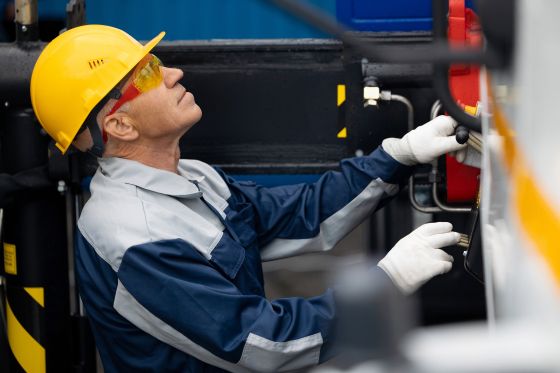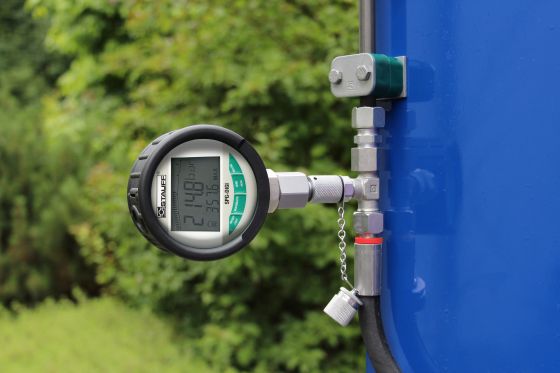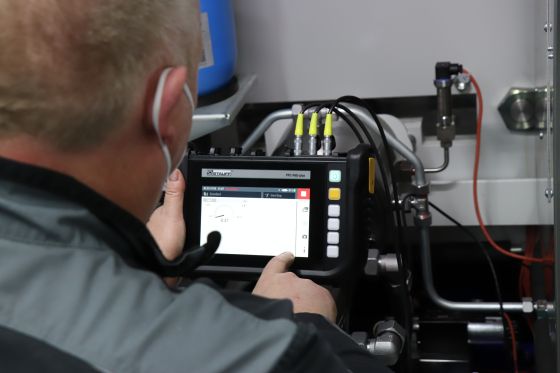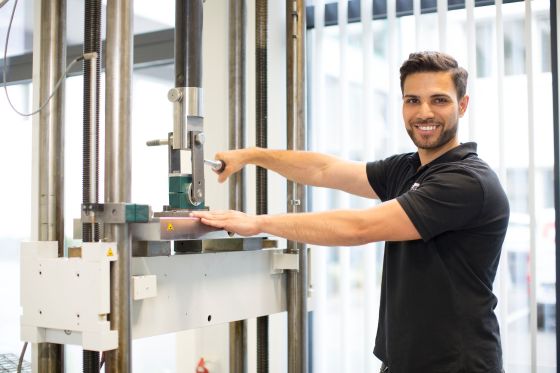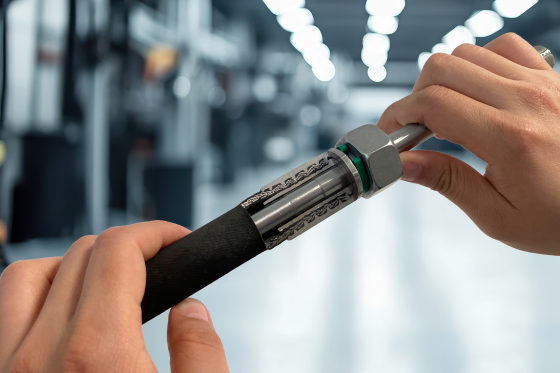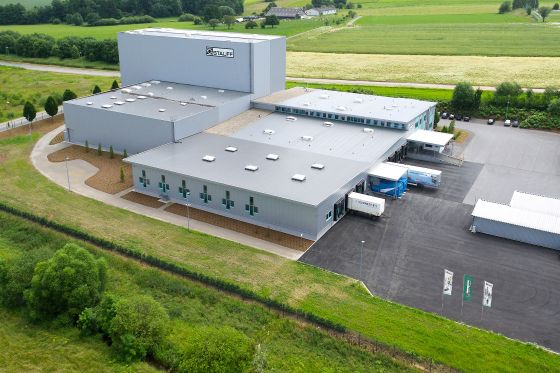Table of contents
- What is condition monitoring in hydraulics?
- Why condition monitoring?
- Typical weak points in the system - and how to monitor them
- Practical solutions with STAUFF components
- Advanced analysis with STAUFF Diagtronics
- Advantages for maintenance and operational safety
- Conclusion: Keep an eye on the condition - avoid failures
- FAQs on the topic of condition monitoring in hydraulics
What is condition monitoring in hydraulics?
Condition monitoring means monitoring the technical condition of a hydraulic system during operation. It is a proven method of preventive maintenance that enables deviations from normal operation to be recognised at an early stage and measures to be initiated in good time.
In contrast to classic "scheduled maintenance" - i.e. at fixed intervals - maintenance here is condition-based. This means that we intervene when it is necessary, not too early and above all not too late.
We don't just look at the oil, but at the condition of the entire system - including pressure curves, temperature behaviour, filter conditions, leaks and line stability. The aim is to avoid unplanned breakdowns and extend the service life of the system.
Why condition monitoring?
Hydraulic systems are the backbone of many machines and systems. At the same time, they often operate under high and frequently fluctuating pressures, at changing temperatures and in harsh environments. A small problem - such as a clogged filter or a leaking connection - can quickly have a major impact.
Without targeted monitoring, such faults often remain undetected for a long time. This leads to
Unplanned downtimes
Expensive consequential damage
Security risks
Inefficient operation
With condition monitoring, we gain clarity about the system status at an early stage - and can act proactively before a defect occurs. This reduces maintenance costs, increases availability and creates planning security.
Typical weak points in the system - and how to monitor them
In practice, faults often occur at the same points. We can monitor these specifically:
Filter condition: An increasing differential pressure indicates when a filter element should be replaced.
Leaks: Pressure losses or visible oil loss indicate leaks.
Temperature development: Overheating puts a strain on oil, seals and components.
Oscillations and vibrations: Indicates inadequate cable routing or loosened fastenings.
Pressure behaviour: Deviations from normal pressure indicate faults in the pump, valves or cylinders.
Practical solutions with STAUFF components
At STAUFF, we offer a wide range of components that can be used to reliably and economically record key condition information - without the need for complex digital infrastructures. Even simple mechanical elements enable a first level of condition monitoring:
STAUFF contamination indicators
Whether optical or optical-electrical: simply designed indicators can be mounted directly on the filter housing and reliably indicate when the element needs to be replaced - before bypass or system loading occurs. Clogging indicators are available in our range for pressure filters, spin-on filters and return line filters
STAUFF pressure measuring points (STAUFF Test)
Ideal for temporary or continuous measurements of operating pressure with analogue measuring devices or digital sensors - simple, safe and flexible to use.
STAUFF pressure gauges
Glycerine-filled Bourdon tube pressure gauges made of stainless steel for simple and inexpensive mechanical determination of the current operating pressure when automated documentation is not required.
STAUFF level indicator
Visual level indicators make it possible to determine the current fluid level in the hydraulic tank - optionally also with integrated temperature detection.
STAUFF pipe clamps to DIN 3015
A stable pipe is not a luxury, but a must. Our clamps reduce vibrations, increase operational safety and extend the service life of neighbouring components.
Advanced analysis with STAUFF Diagtronics
For applications where continuous or detailed monitoring is required, our Diagtronics product line offers additional options:
Particle counters and particle monitors
Monitor particle contamination in hydraulic fluids and respond in a timely manner before contamination leads to failure or costly repairs.
Mobile measuring devices from the PPC series
For precise, portable detection and recording of pressure, differential pressure, temperature, volume flow and speed - perfect for commissioning, troubleshooting or ongoing maintenance.
Electronic sensors and data loggers
Record and document values permanently or over longer periods of time - ideal for long-term monitoring and preventive maintenance.
Multi-stage optical-electrical differential pressure indicators
Microprocessor-controlled pressure switches for monitoring the degree of contamination of filters in hydraulic systems with two alarm outputs for early warning to personnel and timely shutdown of systems.
With Diagtronics, machine conditions can not only be monitored, but also comprehensibly documented, analysed and integrated into existing condition monitoring strategies - from individual units to complex systems.
Advantages for maintenance and operational safety
Condition monitoring is a valuable component of modern maintenance strategies. The advantages are obvious:
Faster response to deviations
Reduction of downtimes and repair costs
Longer component service life
More safety for personnel and machine
More efficient maintenance planning thanks to reliable data
Condition monitoring is a useful addition to standard maintenance, especially in industrial sectors with high capacity utilisation or safety requirements.
Conclusion: Keep an eye on the condition - avoid failures
Condition monitoring is not a topic for the future - it is already common practice today. And it doesn't have to be complicated: The condition of a hydraulic system can be comprehensively determined and monitored with just a few targeted components.
Our STAUFF products offer you the right basis for this: robust, easy to integrate and immediately effective. Together, we create the basis for reliable systems and efficient maintenance - without unnecessary effort.
FAQs
What is the difference between condition monitoring and preventive maintenance?
Do I need digital systems for condition monitoring?
No, not necessarily. Many conditions can also be recorded with simple mechanical displays, measuring points or visual inspections. Simple solutions are often just as effective.
How can I get started without investing a lot?
Start with the critical points such as filter monitoring, temperature measurement and pipe clamps for vibration damping. Our products are easy to retrofit.
Which STAUFF products support condition monitoring?
For example, differential pressure indicators, test couplings (STAUFF Test), pipe clamps, level indicators and temperature sensors - for a holistic view of your hydraulic system.

Newsletter registration
Subscribe to the newsletter now and never miss a new article again!

